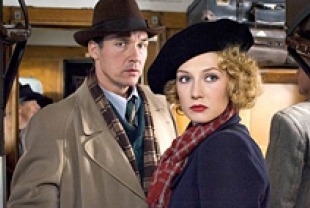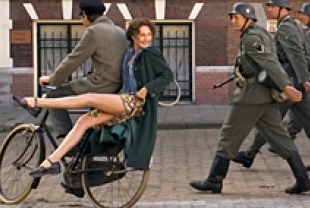In 1944, Rachel Stein (Carice Van Houten), a popular and wealthy Jewish singer before the outbreak of World War II, has found shelter with a Christian family in rural Holland. She is not in the house when it is bombed. Rachel meets a resistance worker, Van Gein (Peter Blok), who promises to usher her to safety across enemy lines for a fee. Mr. Smaal (Dolf de Vries), a lawyer, gives her the money she needs to escape. She is totally surprised when her mother, father, and brother turn out to be on the same boat with her. But Rachel is the only one who escapes when Nazis led by Guenther Franken (Waldemar Kobus) machine-gun them all to death and steal the jewelry and money hidden on their bodies.
The hatred Rachel now feels for the SS commander spurs her to join the Dutch resistance movement run by Gerben Kuipers (Derek de Lint). Initially, she works in a food plant but then she volunteers for a more dangerous assignment on an undercover mission with Hans Akkermans (Thom Hoffman). Rachel, who is now called Ellis de Vries, eventually gets involved in a romantic relationship with the local Gestapo chief Ludwig Muentze (Sebastian Koch) whose wife and children were killed while hiding in a bomb shelter. He is a quiet and reflective man who loves collecting stamps. Hired as his assistant, she manages to get a microphone planted in his office, thus providing the resistance movement with invaluable information. She also gets an opportunity to sing in public at various Nazi affairs. Her co-worker, Ronnie (Halina Reijn), is a hedonist who loves a good party.
In his first feature in his native Netherlands for more than 20 years, director Paul Verhoeven has crafted a fast-paced and engaging wartime drama. The movie is ably carried by Carice van Houten whose expressive face conveys the emotional storms endured by Rachel/Ellis as she demonstrates resiliency in her struggle to stay alive in a time of great violence and treachery. The storyline adds a couple new nuances to World War II movies in that it conveys the anti-Semitic sentiment of many of the Dutch resistance fighters and also depicts the Nazis as more than just cardboard villains. Perhaps the most surprising element of the drama is the post-war events which depict human nature at its worst when ignorance and revenge turn people into beasts. But then such are the effects of war where savagery knows no limits.

